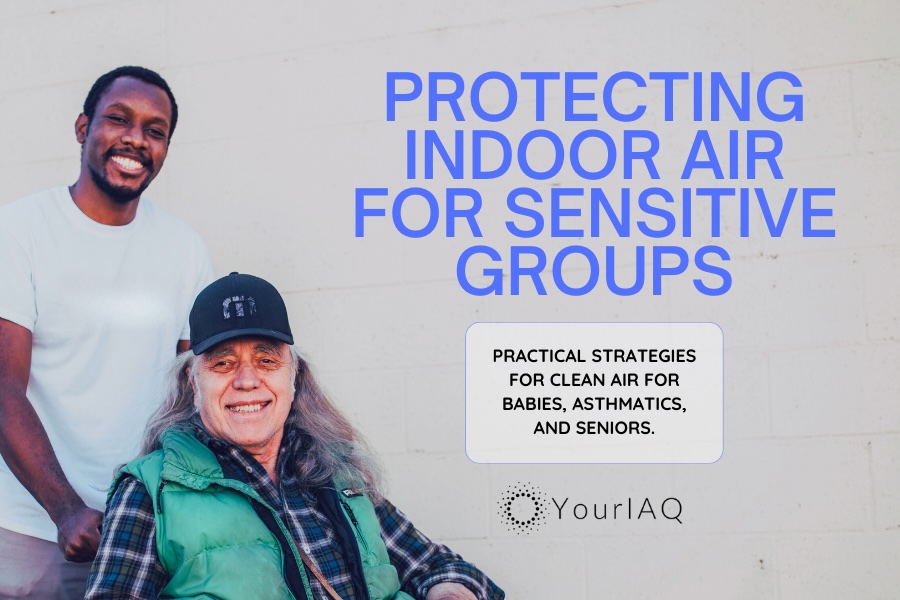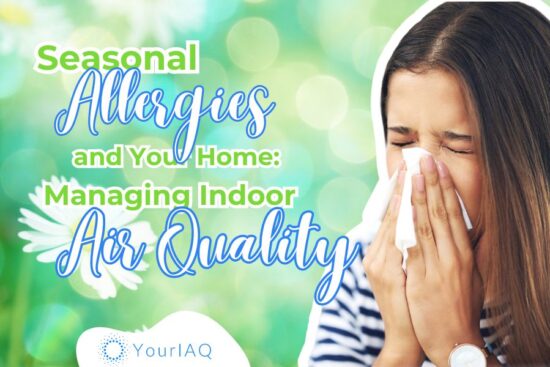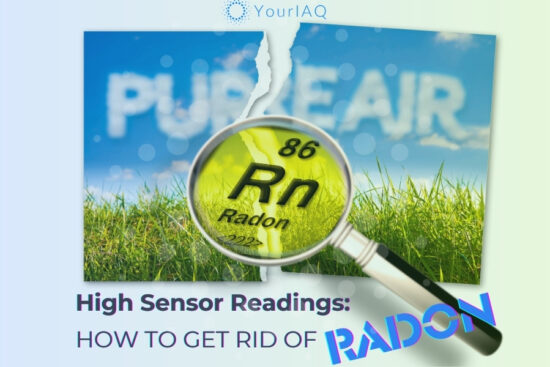
The air we breathe shapes our health, and for some, the quality of that air matters even more. Infants, children, pregnant women, the elderly, and those with asthma are especially vulnerable to indoor air pollutants. Modern lifestyles and building practices often trap these hidden nasties within our homes, making clean air a precious commodity. How do you guard against unhealthy air quality for sensitive groups?
Fear not! Protecting your loved ones’ lungs doesn’t require living in a bubble. We’re also not talking about hazmat suits and decontamination chambers. Protecting your air can be as simple as a few smart swaps and savvy habits.
This guide equips you with actionable strategies to transform your home into a safe haven of clean air for everyone.
Understanding the Impact of Unhealthy Air Quality
Unhealthy air quality can have a detrimental effect on the health of sensitive groups. Exposure to indoor pollutants such as dust mites, pet dander, mold, and volatile organic compounds (VOCs) can trigger allergic reactions, asthma attacks, respiratory issues, and other health problems.
According to the Environmental Protection Agency (EPA), indoor air is two to five times more polluted than outdoor air, making it essential to address the sources of indoor pollutants and improve indoor air quality.
How to Protect Against Unhealthy Air Quality (IAQ) for Sensitive Groups
While we strive for comfort and safety, our indoor air harbors hidden threats that pose particular risks to vulnerable populations. Let’s shed light on the top IAQ threats and equip ourselves with ways to protect those most susceptible.
1. Safeguarding Babies from Hidden Air Pollutants
Imagine your newborn’s lungs as fresh, brand-new balloons. Wouldn’t you want to fill them with the cleanest air possible? Unfortunately, dust mites, VOCs (volatile organic compounds lurking in furniture and cleaning products), and even second-hand smoke can spoil the party in your nursery.
But take a deep breath because we’ve got your back (and those tiny lungs) with these superhero solutions:
- Air Purifier Power: Think of air purifiers with HEPA filters as bouncers at the door, stopping microscopic baddies in their tracks. Look for purifiers with a HEPA (High-Efficiency Particulate Air) rating of over 99.7% and those with CADR (Clean Air Delivery Rate) ratings suitable for your nursery size. Some also offer UV-light zaps for bacteria or HESA filters for extra-fine particle capture.
- DIY Detox: Ditch the harsh chemicals and embrace the power of nature! The American Academy of Pediatrics (AAP) suggests natural alternatives like baking soda and vinegar for everyday cleaning. Or, try simmering citrus peels for a delightfully healthy (and non-toxic!) air freshener.
- Natural Haven Materials: Opt for low-VOC furniture and paints. Your baby’s lungs will thank you for that. Consider natural materials like wood and cotton that are gentler on their delicate skin.
- Ventilation is Vital: Open those windows (weather permitting) and let the fresh air flow! The World Health Organization (WHO) recommends regular ventilation to help flush out pollutants and keep your little haven feeling fresh and airy.
2. Conquering Asthma Triggers
Living with asthma doesn’t have to mean battling for every breath. By taking control of your indoor environment, you can create a haven of clean air and say goodbye to wheezing woes. Here’s how to banish the most common asthma triggers and breathe easier at home:
Enemy #1: Dust Mites
The microscopic dust mites are the main culprits behind dust mite allergies, a common cause of itchy eyes, runny nose, and sneezing. These tiny creatures thrive in warm, humid environments, especially on bedding, where they feed on dead skin flakes. To vanquish them:
- Pay special attention to carpets, furniture (especially bedrooms!), and those hidden havens under beds, behind curtains, and inside air vents.
- Wash bedding weekly in hot water (130°F or higher) and dry completely. Hot water is like a death sentence for dust mites. It denatures their proteins, effectively cooking them and preventing them from reproducing. Regular hot water washes significantly reduce dust mite populations, making your bed a less hospitable habitat for these allergy-inducing critters.
- Consider using a mattress protector to provide an additional layer of protection against dust mites, allergens, and spills. Choose a protector that’s breathable and waterproof for optimal comfort and hygiene.
- Keep humidity levels below 50% with a dehumidifier. Not only will you be making dust mites miserable, but you’ll also be tackling their slimy partner-in-crime – mold.
Enemy #2: Mold
Mold thrives in damp and humid environments, and exposure to mold spores can trigger allergic reactions and respiratory issues. To prevent mold growth:
- Fix leaky faucets and pipes promptly. Use exhaust fans in bathrooms and kitchens when showering or cooking.
- Open windows whenever possible to let fresh air and sunlight in. Mold hates UV rays!
- If you see visible mold, don’t panic! Tackle small patches with a vinegar-water solution or store-bought mold remover. For larger areas, call a professional.
Why are molds bad?According to the CDC, approximately 21% of homes in the US have experienced a visible mold problem. The EPA has estimated that the cost of mold-related damage to US homes ranges from $6 billion to $32 billion each year. These stubborn organisms not only cause damage to properties but also pose a significant health risk. Their microscopic spores contain mycotoxins, toxic chemicals that are linked to respiratory problems, immune system suppression, and even cancer. A study published in the Journal of Allergy and Clinical Immunology revealed that 31% of adults who have asthma also have mold allergies. Taking prompt action to address mold issues is crucial for several compelling reasons. Firstly, molds have the ability to reproduce rapidly and spread effortlessly, making them difficult to control once they establish a foothold. It is imperative to act quickly to prevent further escalation and widespread contamination. Secondly, mycotoxins produced by molds exhibit remarkable stability, persisting in the environment for extended periods even after the physical removal of the mold. This persistence highlights the long-term risks associated with mold exposure, making proactive measures essential. Finally, the impact on human health cannot be overstated. Mold exposure, even at low levels, has been linked to the exacerbation of existing health problems such as asthma and respiratory infections. Recognizing the potential health risks underscores the urgency to take action, not only for immediate relief but also for the long-term well-being of individuals and the overall environmental health. |
See also:
- How Much Mold Will Affect Your Indoor Air Quality?
- How to Detect Mold in the Air
- Mold Hotspots: Ranking the 5 Worst U.S. States for Mold
Enemy #3: Pet Dander
Pet dander, shed skin cells from animals, is a common allergen that causes allergic reactions. We love our furry companions, but their dander is an asthmatic’s kryptonite. To keep the peace between lungs and paws:
- Cover vents with dense material like cheesecloth to prevent pet dander from circulating through the air.
- Bathe and brush your pets frequently to reduce the amount of dander they shed.
- Have pet-free zones, like bedrooms, to minimize dander exposure.
- Avoid grooming pets if you have animal allergies, and if necessary, wear a mask while doing so.
- Invest in an air purifier with HEPA filters specifically designed for pet dander and allergens.
Recommended Air Purifiers for Pet Dander and Allergens |
||
| Coway Airmega 400S Smart Air Purifier |
|
$499 – $699 |
| Rabbit Air MinusA2 Ultra Quiet HEPA Air Purifier |
|
$449 – $599 |
| Blueair Blue Pure 411i Max Air Purifier |
|
$249 – $349 |
3. Protecting Seniors from Indoor Hazards
As we age, our lungs become more sensitive to indoor air pollutants like mold spores, dust mites, pet dander, and harsh chemicals. These can trigger respiratory problems and allergies and even worsen existing health conditions.
Fortunately, simple adjustments can significantly improve air quality and protect seniors’ health at home:
- Elevate pillows and headrests: This promotes easier breathing during sleep, reducing the risk of sleep apnea, a common issue in seniors.
- Use exhaust fans and stovetop covers while cooking: These tools effectively capture harmful fumes and prevent them from lingering in the air, reducing exposure to respiratory irritants.
- Take shorter showers in cooler water: Hot, steamy showers can dry out airways and exacerbate existing breathing problems. Opting for cooler water and shorter showers helps maintain airway health.
Promoting a Healthy Home Environment
Creating a healthy home environment goes beyond addressing indoor air quality. Here are some additional steps you can take to promote overall well-being for sensitive groups:
Healthy Diet
A healthy diet supports immune function and reduces the risk of allergies and respiratory issues. Incorporate a variety of fruits, vegetables, whole grains, and lean proteins into your meals. Avoid processed foods and minimize the consumption of foods that may trigger allergic reactions.
Proper Hygiene
Encourage frequent handwashing, particularly before meals and after outdoor activities. Proper hygiene helps prevent the spread of germs and reduce the risk of respiratory infections.
Outdoor Air Quality
While it is important to create a healthy indoor environment, outdoor air quality also plays a significant role. Stay informed about air quality alerts in your area and limit outdoor activities on days when air pollution levels are high.
Breathe Easy, Everywhere
Clean air isn’t just a perk; it’s a necessity, especially for our most vulnerable friends and family. Children, seniors, and those with respiratory conditions deserve every breath to be a blissful breeze, not a wheezing struggle.
You have the power to make a difference! Every open window, every natural cleaning swap, every air purifier hum is a victory against indoor air nasties!
FAQs: Unleash Your Inner Air Warrior
My budget is tight. How can I improve IAQ without breaking the bank?
DIY Detox Brigade: Ditch harsh chemicals for vinegar and baking soda solutions. Embrace houseplants! They filter pollutants and boost humidity naturally.
I’m worried about air quality at work or school. What can I do?
Be an air advocate! Talk to your employer or school about improving ventilation and using low-VOC products. Fresh air for everyone!
My furry friend sheds like crazy! How can I keep pet dander under control?
Wash pet bedding in hot water weekly. Vacuum with HEPA filters regularly, and designate pet-free zones like bedrooms. Consider low-shedding breeds.
Are air purifiers worth it?
Yes, especially for sensitive groups! Choose one with HEPA filters and features tailored to your specific air nasties. Look for budget-friendly options too.
Is there an app for that?
Absolutely! Download air quality apps to track pollution levels and adjust your activities accordingly. Smart home technology can even automate air purification.






